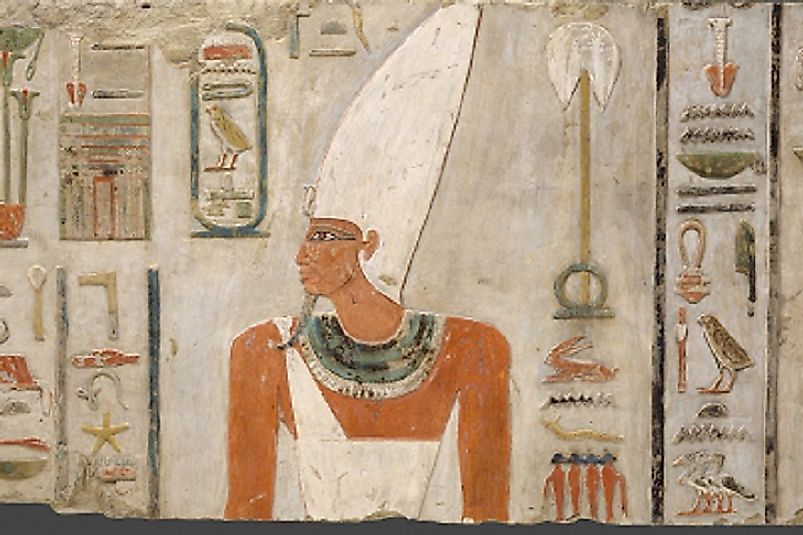The Middle Period Ancient Egyptian Kingdom Dynasties

5. Background and Initial Formation
The Middle Kingdom Period in Egypt spanned from the 11th Dynasty to the beginning of the 13th Dynasty. Before the Middle Kingdom was established, the First Intermediate Period in Egyptian history was dominated by chaos and civil wars as two competing families vied for the throne of Egypt. Pharaoh Mentuhotep II founded the 11th Dynasty after he defeated the last ruler of the 10th Dynasty. Thus ended the first Intermediate Period, and the conflict between the 10th and 11th Dynasty was resolved as Mentuhotep II rose to power. He then reunified Upper and Lower Egypt making Thebes his capital city.
4. Rise To Power And Accomplishments
Mentuhotep II, by now Pharaoh of Egypt, had turned his sights on military conquests in order to consolidate his authority over all of Egypt. He dispatched military forays into Nubia to the south and the Sinai region to the northeast. The old Egyptian cult of perceiving the pharaoh as a god was revived, and Mentuhotep II wore the crown of Amun and Min to signify his deified status among his people. Mentuhotep II was the ruler who revived and re-invented Egyptian art, and one that influenced much of what administrations do in Egypt still today. Storytelling was reinvented to be put into written form, and he also encouraged a higher degree of assimilation of the arts into everyday life, and the use of better agricultural techniques. Among the latter, large irrigation works were installed in the desert regions to allow for the development of farming therein.
3. Challenges and Controversies
Mentuhotep III succeeded his father as pharaoh after 51 years. He ruled Egypt for 12 years, but in that time he was able to build the first Egyptian Navy ships to sail to Punt from Egypt's Red Sea ports. He also consolidated Egypt's military defenses by way of the construction of forts in the eastern Delta Region. Mentuhotep IV, his successor, was a less established pharaoh, and was also a less capable ruler. He sent ships to the Red Sea's coasts to procure blocks of stone for his monument constructions, led by his vizier, Amenemhat. Obviously, some struggle for dominance occurred between the pharaoh and his vizier later in his reign that ended with the vizier becoming the Pharaoh Amenemhet I, signaling the beginning of the new 12th Dynasty.
2. Decline and Demise
Pharaoh Amenemhet I made El-Lisht his capital, and consolidated military defenses by maintaining armies in readiness. He regularly sent contingents up the Nile River and into the Sinai Peninsula as expeditionary reinforcements. Amenemhet II succeeded his father, and ruled a over a time relative peacefulness and coexistence with Egypt's neighbors. Senusret II followed as pharaoh, and he was in turn succeeded by Senusret III. Senusret III revived the warrior-king image of Egypt's leaders as he personally led military quests to Nubia. Amenemhet III reigned alongside his father, the very same Senusret III, for a number of years before ruling Egypt alone. That ended with the beginning of his son Amenemhet IV's rule, which saw the decline of the 12th Dynasty, largely caused by drought and consequent famine. The first female pharaoh, Sobekneferu, succeeded to the throne thereafter, but ruled for only four years.
1. Historical Significance and Legacy
The next ten to fifteen years were ruled by a succession of short-lived kings, which are seen by some historians as the advent of the 13th Dynasty, though some argue that these kings were not genetically related. The beginning of the 13th Dynasty was chaotic, but later stabilized for a period of 80 years with longer reigning pharaohs. This stability lasted until Neferhotep I came to power, a man who ruled with an iron grip. The 14th Dynasty was commenced by Xois, and the Xois rule of Egypt was at best unremarkable, an a time which quickly led to the disintegration of the 14th dynasty, opening the way for the start of the Second Intermediate Period. The Middle Kingdom brought back the legacy of central government rule from the Old Kingdom. The appointment of two viziers and the revival of old government posts were also reinstated, and large-scale irrigation endeavors were commenced to allow for the production of a greater abundance of agricultural crops.











